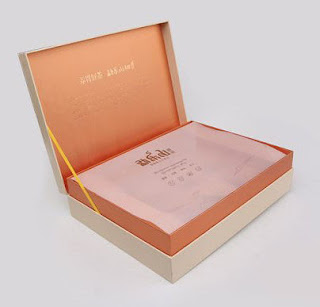With the growing environmental awareness amid consumers, today's environmentally friendly green packaging has become a global trend. Innove Packaging believes that the concept of green packaging can mainly be interpreted in two aspects: protecting the environment and saving resources. The two are complementary and indispensable. But how can we achieve true "green packaging"?
1. Green Materials. The packaging materials should be non-toxic and harmless to the human body and living things. It should be noted that the package should not contain toxic elements.
2. Packaging Minimization. That is, in the packaging design, the designers should keep environmental protection and reducing waste in mind, as well as satisfying the basic packaging purpose.
3. Degradation of Packaging Waste. Make sure that the discarded packaging material can be decomposed in the natural environment without polluting the natural environment.
Innove Packaging is a professional high-end custom packaging boxes manufacturer. Go Green is our constant pursuit of packaging. Environmental protection and a green earth is what we're always working hard to achieve, together with every party involved!
Showing posts with label food-packaging. Show all posts
Showing posts with label food-packaging. Show all posts
Wednesday, August 7, 2019
Sunday, February 3, 2019
High Stakes in Food Packaging Requires Right Ink for Printing
When ink is applied to food packaging as a printing material, it must be non-transferable. Prints in food packaging should not use conventional inks. The printing company must ensure that all the solvents in the ink are completely volatilized after printing. The ink needs thorough curing and meet the corresponding industry standards.
::Phasing out of Hazardous Benzene-solvent Inks::
In current printing for plastic food packaging, benzene-soluble chlorinated polypropylene inks are the most widely used, both the manufacture and use of which are in good practice. Such inks are mainly used in the printing of BOPP (biaxially oriented polypropylene) materials, and through gravure. Despite the benefits of good printing suitability & post-press processing performance and fast drying, they also have as big disadvantages. Firstly, the solvent residual in prints from such inks is high and toluene is toxic. Secondly, as the thermal stability of the chlorinated polypropylene is poor, the solvents tend to release chlorine to form hydrogen chloride during the production and storage, which makes the ink more acidic, causing severe corrosion to the printing plate roller. Also, the benzene-soluble ink can destroy the ozone layer and cause harm to workers' health and safety during use. And the residue remaining in the packaged product will cause a certain degree of contamination of the food in the package. This type of inks are phasing out, and regulations for prohibiting or controlling the use of this ink have already been developed in Europe and some other countries.
Because of the problems of benzene-soluble inks, environmentally friendly inks came into being. The use of environmentally-friendly inks does not pollute the environment, nor cause physical harm to the operator, nor incur contamination to the contents.
::Phasing out of Hazardous Benzene-solvent Inks::
In current printing for plastic food packaging, benzene-soluble chlorinated polypropylene inks are the most widely used, both the manufacture and use of which are in good practice. Such inks are mainly used in the printing of BOPP (biaxially oriented polypropylene) materials, and through gravure. Despite the benefits of good printing suitability & post-press processing performance and fast drying, they also have as big disadvantages. Firstly, the solvent residual in prints from such inks is high and toluene is toxic. Secondly, as the thermal stability of the chlorinated polypropylene is poor, the solvents tend to release chlorine to form hydrogen chloride during the production and storage, which makes the ink more acidic, causing severe corrosion to the printing plate roller. Also, the benzene-soluble ink can destroy the ozone layer and cause harm to workers' health and safety during use. And the residue remaining in the packaged product will cause a certain degree of contamination of the food in the package. This type of inks are phasing out, and regulations for prohibiting or controlling the use of this ink have already been developed in Europe and some other countries.
Because of the problems of benzene-soluble inks, environmentally friendly inks came into being. The use of environmentally-friendly inks does not pollute the environment, nor cause physical harm to the operator, nor incur contamination to the contents.
Subscribe to:
Comments (Atom)


